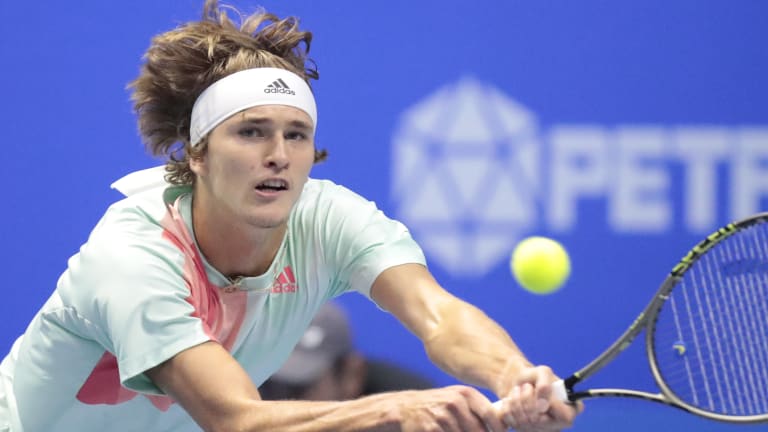Stan Wawrinka stood, frozen and flat-footed, in the middle of the court as the ball went past him for a winner. He had been expecting it to come to his backhand side. When it went to his forehand instead, there was nothing the newly-crowned U.S. Open champion could do but put his head down and clap his palm against his strings in a gesture of appreciation at his opponent’s surprisingly good shot.
That opponent, Alexander Zverev, hadn’t smacked the ball especially hard, or placed it perfectly in the corner. All the 19-year-old German had done was send a solid backhand up the line. But Wawrinka understood that it wasn’t where Zverev had hit the ball, but when. This was the tail end of a tense third set in Sunday’s St. Petersburg final, and Wawrinka, the world No. 3, had been pushing hard to make inroads on Zverev’s serve. It was exactly the moment when the Swiss veteran might have expected a teenager to crack under the pressure of trying to win his first ATP title. Wawrinka, tennis’ new king of Sundays, had won 11 straight finals and had been up 3-0 in the third set of this one. Why would he believe this kid would be the one to come back and break that streak?
But Zverev didn’t crack under the pressure. Instead, he kept his racquet steady and found just the right balance of margin and aggression with his backhand. All Wawrinka could do was applaud the kid’s nerve. With that potentially anxious moment past him, Zverev would swing more freely in breaking Wawrinka and holding for a 6-2, 3-6, 7-5 win. It was the first of what is sure to be many tournament victories in the future, and Stan wasn’t the only one applauding it. The men’s tour has been desperate for new blood, and Zverev is the first teenager to win an ATP title since Marin Cilic all the way back in 2008.
